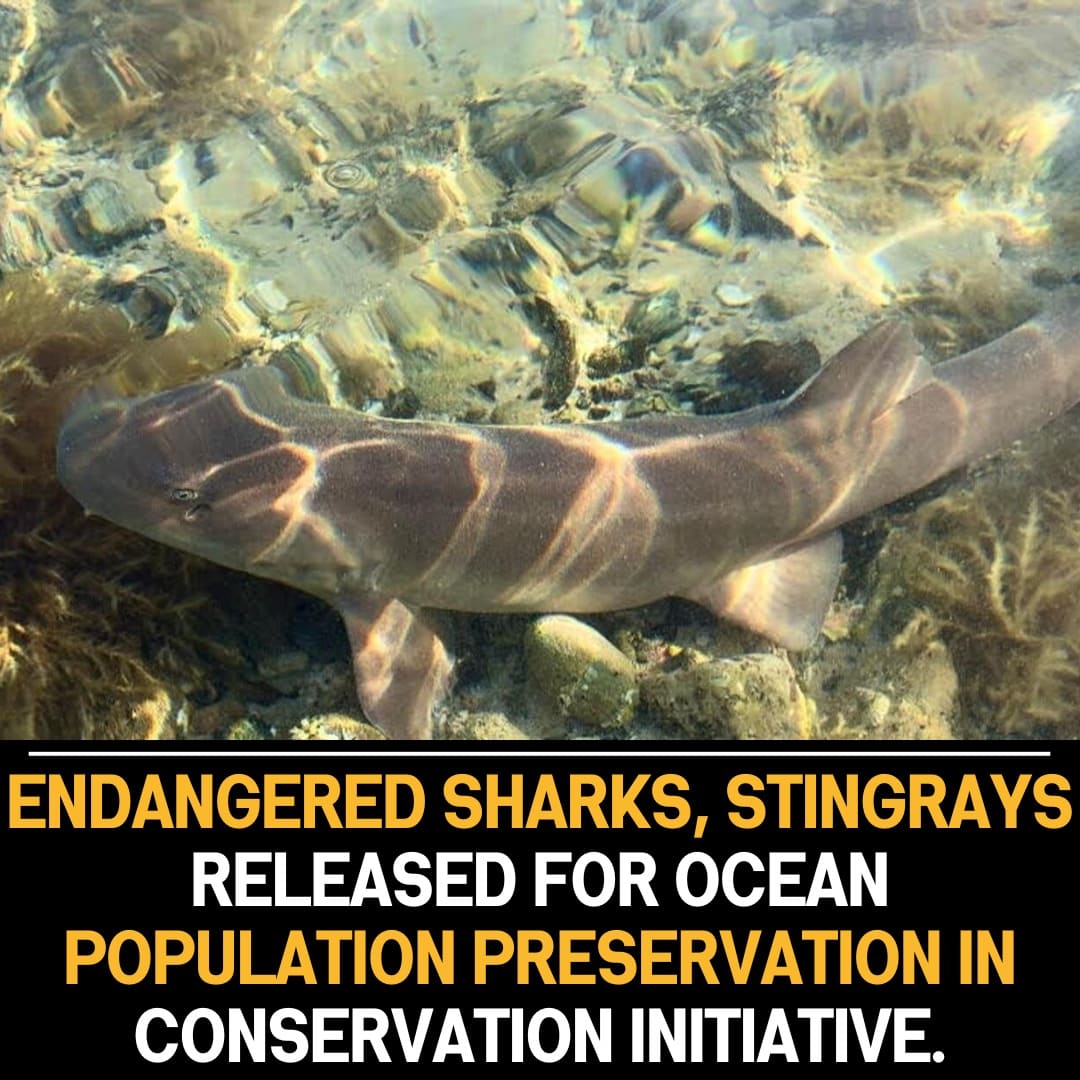In a commendable conservation effort, a significant initiative is underway to release endangered sharks and stingrays back into their natural habitat – the vast expanse of the ocean. This initiative carries a dual purpose: to preserve and bolster the populations of these threatened species and, in doing so, contribute to the overall health and biodiversity of marine ecosystems.
The endangerment of sharks and stingrays is a critical issue that has garnered increasing attention from conservationists and environmentalists. Factors such as overfishing, habitat degradation, and climate change have posed severe threats to the survival of these majestic marine creatures. Recognizing the urgency of the situation, the conservation initiative aims to address these challenges and pave the way for the recovery of these species.
Releasing endangered sharks and stingrays into the ocean is a strategic move to restore balance within marine ecosystems. Sharks, as apex predators, play a crucial role in regulating the populations of other marine species, thereby maintaining the delicate equilibrium of the underwater world. Stingrays, with their unique ecological niche, contribute to the diversity and resilience of marine ecosystems.
The release process involves careful planning and consideration of various factors. Conservationists work in collaboration with marine biologists and experts to identify suitable release sites and ensure that the reintroduction aligns with the natural behaviors and habitats of the species. Monitoring mechanisms are often put in place to track the post-release movements and behaviors of the sharks and stingrays, providing valuable data for ongoing conservation efforts.
This initiative is not just about releasing animals into the wild; it is a comprehensive strategy that addresses the root causes of endangerment. Conservationists often collaborate with local communities to raise awareness about the importance of protecting these species and their habitats. Community engagement plays a pivotal role in creating a sustainable environment where humans and marine life can coexist harmoniously.
Furthermore, scientific research is an integral component of the initiative. Studying the behavior, migration patterns, and breeding habits of released sharks and stingrays contributes to a deeper understanding of these species. This knowledge is instrumental in refining conservation strategies and informing policies that aim to safeguard marine biodiversity.
The success of this conservation initiative is not measured solely by the act of releasing the animals; rather, it hinges on the long-term impact on the populations and the ecosystems they inhabit. Continuous monitoring, adaptive management strategies, and collaboration with stakeholders are essential components of ensuring the sustained well-being of these endangered marine species.
In conclusion, the conservation initiative to release endangered sharks and stingrays into the ocean is a multifaceted approach aimed at addressing the complex challenges faced by these species. By preserving and bolstering their populations, the initiative contributes not only to the survival of individual species but also to the overall health and biodiversity of marine ecosystems. As these majestic creatures return to their natural habitats, it is a testament to the collective efforts dedicated to ensuring a thriving and balanced marine environment for generations to come.









